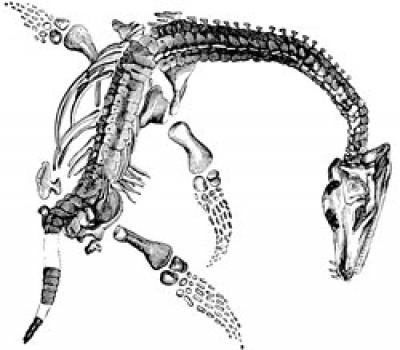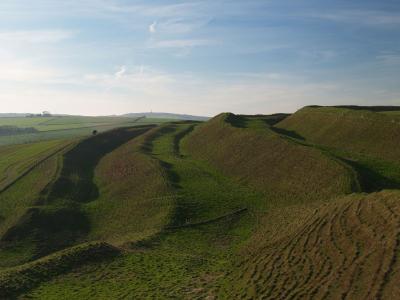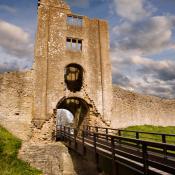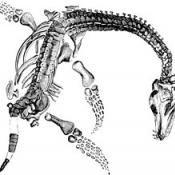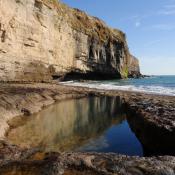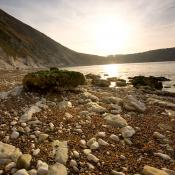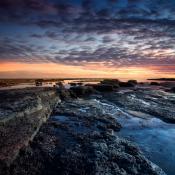The history of Dorset is a fascinating affair, spanning well over two hundred million years. Fossils found along the 'Jurassic Coast' (given World Heritage Site status in 2001) document the entire Mesozoic era and include the first complete Ichthyosaur and fossilized Jurassic trees. This particular stretch of coast is also famous for an array of textbook landforms, including a cove (Lulworth), natural arch (Durdle Door) and tombolo (Chesil Beach), all of which bear testament to the way in which natural forces have shaped our landscapes over time.
A series of limestone ridges bisect the county. The largest is part of the ancient South England Chalk Formation which also underlies Salisbury Plain, the Isle of Wight and the South Downs. Squashed between these bands of limestone and chalk are wide clay vales with large flood plains, most notably the Stour and Frome valleys near Wareham. The Stour flows into the Blackmore Vale, a wide basin in the north of the county, while the Frome collects water from the Dorset Downs and flows through Dorchester to Poole Harbour, the second largest natural harbour in the world.
Dorset's high chalk hills provided ideal locations for early defensive settlements. More than sixty long barrows (dating from Neolithic times) have been found in the county, while the Dorset Cursus, running for a full 6 miles through the chalk downs of Cranborne Chase is thought to be the largest Neolithic site in Britain. Originally consisting of a pair of parallel banks about 90m apart running north-east to south-west, the Cursus is now visible only as crop or soil marks, although some of the original earthworks remain, as do many of the associated long barrows.
The earliest recorded settlement of Dorset was by Mesolithic hunters in 8000 BC. Small groups were concentrated along the Isle of Purbeck, the Isle of Portland, Weymouth, Chesil Beach and the Stour Valley. These early settlers used tools and fire to clear the ancient oak forest that covered the hills, making way for the agriculture and animal husbandry that was to flourish during the Iron Age.
The remains of Iron Age forts have been found on many of Dorset's hilltops, most famously at Maiden Castle, whose vast multiple ramparts, enclosing an area the size of 50 football pitches, are said to represent the largest earthworks in Europe. It is thought that Maiden Castle was the main settlement of an Iron Age tribe based in Dorset called the Durotriges (water-dwellers).
- History

